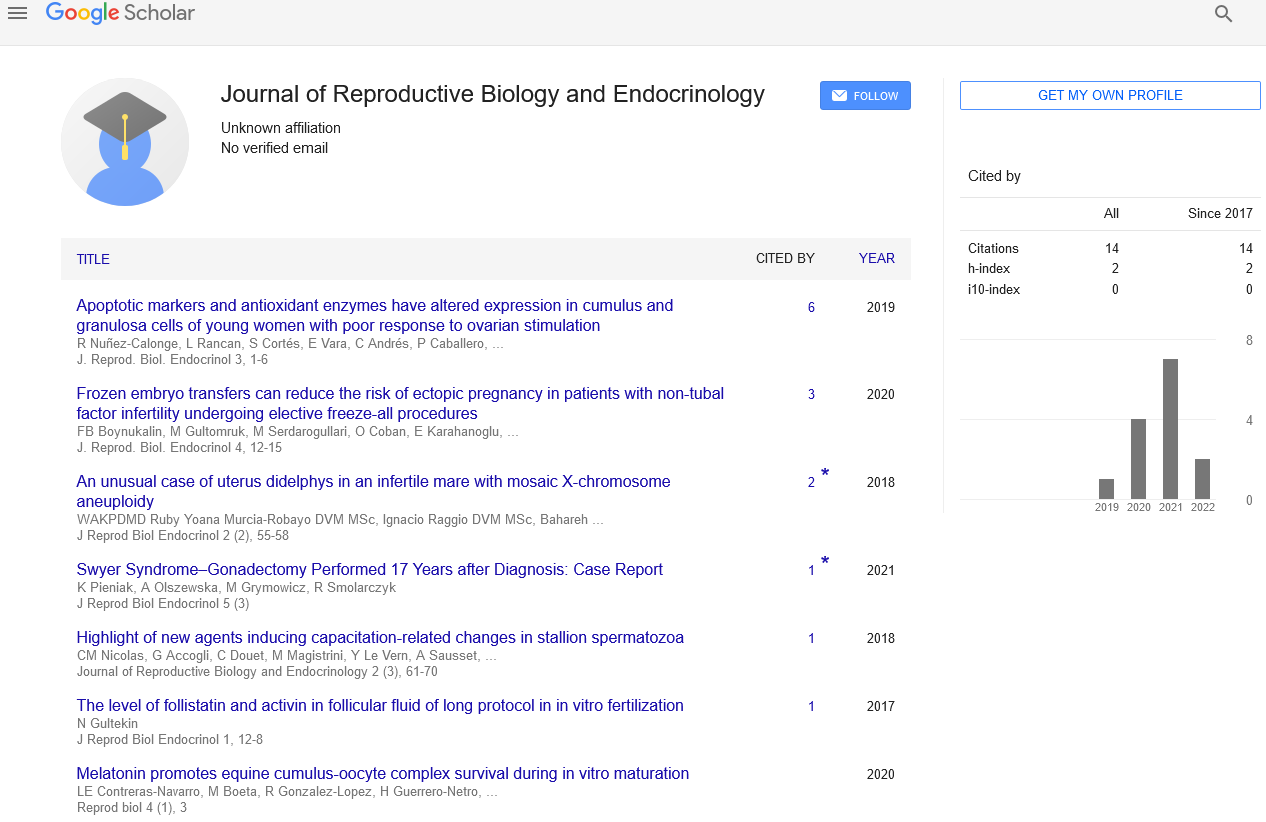Oocyte development: all begins in intrauterine life
Received: 17-Aug-2017 Accepted Date: Aug 17, 2017; Published: 24-Aug-2017
Citation: Giorgi VSI. Oocyte development: all begins in intrauterine life. J Reprod Biol Endocrinol. 2017;1(1):4.
This open-access article is distributed under the terms of the Creative Commons Attribution Non-Commercial License (CC BY-NC) (http://creativecommons.org/licenses/by-nc/4.0/), which permits reuse, distribution and reproduction of the article, provided that the original work is properly cited and the reuse is restricted to noncommercial purposes. For commercial reuse, contact reprints@pulsus.com
In recent decades, we can observe an increasing number of couples with difficulties in get pregnant. Disorders in both female and male reproductive system can lead to sexual dysfunction, subfertility or infertility to couple. In women, oocyte quality is one of many fundamental factors to have success in get pregnant.
The history of oocyte begins, nearly on forth week of intrauterine life when primordial germ cells migrate from yolk sac wall to dorsal region of embryo to start ovary development. These primordial germ cells, now called oogonia, divide by mitosis and take part of two essential processes to obtain a mature oocyte: folliculogenesis and oogenesis.
After successive mitosis, oogonias enter in meiosis and stop in prophase I. The folliculogenesis starts with a close relationship between a gamete and autosomic cells. Initially, germ cells and precursor of granulosa cells are organized in cords with a group of future oocytes inside sorrounded by precursor of granulosa cells. With the beginning of meiosis, oocytes cordenate the assembly of a new structural organization in primordial follicles involving granulosa cells. There are known factors and pathways fundamental in coordinate early folliculogenesis, as GDF-9 (growth and differentiation factor 9), NGF (nerve growth factor), PI3K (phosphatidylinositol 3 kinase), mTORC1 (rapamycin complex 1) and p27Kip1 (p27)-cyclin dependent kinase system. Also, estrogen may play a role in the formation of primordial follicles. Primordial follicle activation and early follicle growth is thought to be largely gonadotropin independent and instead under the control of paracrine and autocrine signals from several sources in the ovary, including stromal cells, macrophages, and other follicles [1].
At birth, the little girls present the great majority of primordial follicles that constitute their ovarian reserve. Until a short time ago, this means that the future reproductive of woman was designed since her birth and no more oocyte could be produced. Fortunately, today we have another ideas about ovarian reserve, an in vitro study shows that mitotically active germ cells present in human ovary can generate new oocytes [2].
There is insufficient information about the mechanisms involved in primary to secondary follicle transition in primates including human, and this is a challenge for new studies. Alterations in vascular permeability of hematofollicular barrier permit antrum formation. Follicular fluid is formed by exsudate plasma and products of secretion of granulosa and theca cells and two different populations of granulosa cells are observed: cumulus cells and mural granulosa cells. In this stage, follicles are gonadotropin dependent and their growth depends on FSH, LH and hormones and growth factors produced in ovaries. Despite of a pool of follicles be recruited in each menstrual cycle, just one follicle is considered dominant and the oocyte is ovulated. The complexity of mechanisms of selection of dominant follicle is high and dependent of hormones and receptors that mediate the development of one and atresia of the other ones.
Curiously, there has been increasing evidence to suggest that multiple (two or three) antral follicular waves are recruited during human menstrual cycle, as already documented in several animal species [3]. The mechanisms that promote these waves are not fully understood, but it could help to develop, for example, non-invasive markers of the physiologic status of follicles improving assisted reproduction outcomes.
With ovulation, the oocyte finishes meiosis I and stop in methaphase II. The environment in uterine tubal is different from that inside ovarian follicle, therefore oocyte have few time to find a sperm, complete meiosis II and no longer be an unique cell...or degenerate after all this story.
Many interactions involving local and systemic factors contribute to formation of a mature oocyte. The body of woman is prepared to spend much energy in all sexual cycle to produce just one oocyte. Currently, woman infertility is a topic that deserves dedication, hard work and persistence. The studies should to guarantee reproductive future for that woman who desire be a pregnant with advantage age, or after chemotherapy, or suffer with endometriosis, polycystic ovarian syndrome, premature ovarian failure, etc.
REFERENCES
- Peters H, Byskov AG, Himelstein-Braw R, et al. Follicular growth: the basic event in the mouse and human ovary. J Reprod Fertil. 1975;45(1):559–66.
- White YAR, Woods DC, Takai Y, et al. Oocyte formation by mitotically-active germ cells purified from ovaries of reproductive age women. Nat Med. 2012;18(3):413-21.
- Baerwald AR, Adams GP, Pierson RA. Ovarian antral folliculogenesis during the human menstrual cycle: A review. Hum Reprod Update. 2012;18:73-91.





